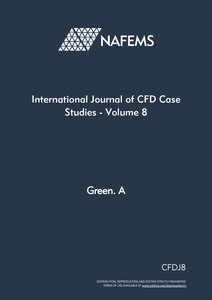 | The papers in this eighth volume of the Journal indicate the wide range of applications in which CFD interacts with industrial engineering design. A reader briefly glancing at the paper titles might also conclude that each covers a separate area of engineering: external aerodynamics, gas turbine combustion, unsteady internal flow in fluid power components, automobile engine analysis and industrial paint spraying. However, there are a couple of themes in the papers presented in this edition: fluid structure interaction and sprays. |
The paper by Arnold et al deals with interaction between the aircraft structure and external air flow with the additional complication of aircraft manoeuvres. The multiple path flow in a pneumatic piston valve, discussed in the paper by Rüdiger et al , illustrates another type of interaction with vortex generation and valve switching.
The CFD simulation of sprays is important in a number of industries. As shown in Tatschl’s paper they play a major part in diesel combustion efficiency and emissions. Similarly, combustion in gas-turbines relies on fuel spray nozzles and the paper by Poovanna and Sridhara discusses modifications to the nozzle geometry. Numerical models for electro-static and pneumatic sprays have been incorporated into CFD models by Scheibe et al to predict paint film thickness distribution and transfer efficiency.
Hopefully, and it is an important purpose of this Journal, cross-linking between disparate industries and new approaches may be made where CFD practitioners have to tackle similar themes in their work.
Information
| Reference: | CFDJ8 |
| Author: | Green. A |
| Published: | 1st December 200+ |
| Audience: | Analyst |
| Language: | English |
| ISSN: | 1462-236X |
| ISBN: | 978-1-910643-94-5 |
| https://doi.org/10.59972/f9cyzptl | |

Stay up to date with our technology updates, events, special offers, news, publications and training
If you want to find out more about NAFEMS and how membership can benefit your organisation, please click below.
Joining NAFEMS© NAFEMS Ltd 2025
Developed By Duo Web Design